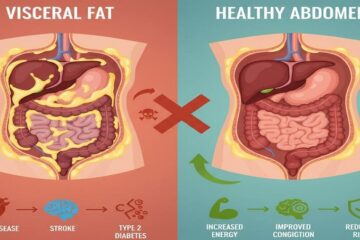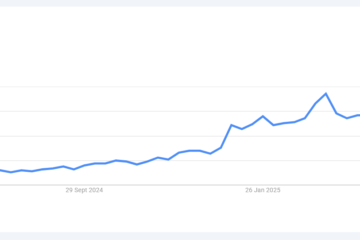When it comes to losing weight, Ketogenic (keto) diet And Intermittently fast (if) Are there two famous diet projects, followed by millions of people around the world? Celebrities verify them, precision influencers swear by them, and your friend’s cousin probably claims that they work as a miracle.
These two diets approach weight loss in different ways. This is probably the reason why many people – especially those suffering from weight loss problems – surprisingly, connecting the two diets can produce immediate results.
Let’s find out if these two diets can work together to provide you with better weight loss results. And more importantly is it safe?
What is fasting (if) intermittently?
A Plan of fast -fasting diet for weight loss There is a food pattern that cycles between food and fasting periods. Unlike traditional diet that tells you What You eat, if you tell you While You eat
Adopted something extremely popular and widely Intermittent fasting diet projects Include:
- 16/8 Method: In this procedure, you fast 16 hours and eat only 8 hours every day in the window.
- 5: 2 Diet: Here, you can usually eat 5 days a week, but fasting for the other 2 days or your calorie intake (up to 500-600).
- Alternative day’s fast: You are regularly eating a day and a day of fasting or a very low calorie intake.
When working correctly, if precision offers many benefits, such as:
- Better mental function and mental explanation
- Improved blood sugar control and insulin sensitivity
What is the Keto Diet?
Ketogenic diet for weight loss A high -fat, very low -carb food plan designed to move your body to category. A state where your body uses fat as a basic source of energy rather than carbohydrates.
Originally developed as medical therapy for epilepsy, the ketogenic diet for weight loss is widespread today:
- Lose weight and control the appetite
- Support mental health and improve academic verbs
- Improve blood sugar control and manage insulin resistance
- Possibly reduce the risk of heart disease
Some studies suggest that the Kato diet can help improve some neurological conditions, such as Alzheimer’s disease. However, further research is needed in the area.
Cato and intermittent fasting combination – benefits and risks
When separated, both keto and intermittent fasting help your body burn fat more effectively. Together, they can increase the effect.
However, before the two diets together, it is important to understand the benefits and potential risks of attaching them to the rapid weight loss.
Benefits
1. Acute kitosis
The Kato diet comes with its own set of challenges. The first is definitely falling into category. The initial transition period occurs when your body transmits the fat that burns glucose. Fasting intermittently can help your body enter the category faster.
2. Increased fat reduction
Both methods can boost fat loss on their own, but when together, they can accelerate the weight loss process. Periodically fast fat increases oxidation and increases metabolic performance, while Kato ensures that your body permanently burns fat.
3. The control of better appetite
One of the amazing benefits of fasting and fasting is the control of better appetite. Cato helps to stabilize blood sugar and insulin levels, while preventing appetite hormones. Together, they make it easier to stick to your dining plan without feeling hungry or deprived.
Possible concerns
Although keto and intermittent fasting can be an effective approach to weight loss, it comes with its potential challenges and may not be right for everyone.
- Early people may find this very limited and challenging. This can cause difficulty in implementing food plans.
- During the early stages, you may be experiencing sudden sinking in energy. Fatigue, mental fog, headache and irritability are common side effects.
- You may suffer from nutritional deficiencies. Due to the nature of the ban, there is a risk of not getting enough vitamins and minerals.
- Some groups should refrain from connecting IF and Kato Diet Plan for weight loss. It contains pregnant or breastfeeding women, people with food disorders, and some precision conditions such as high diabetes or heart disease – unless intermittently approved by a fasting doctor or a cato -diet consultant.
Pro Tip: It is better to start with a diet approach (usually keto) and then with the other (fast fast), once your body adjusts to new eating routines.
How to securely connect the fast and intermittently
If you decide to try both diets together, some points for success are:
- Start slowly and gradually develop. If your body adjusts to a new dietary behavior, the diet plan if starts at 12-14 hours and then go up to 16 hours or more.
- Make sure your keto diet is healthy and nutrients. Add healthy fat (eukado, olive oil, fatty fish), moderate protein, and low carb vegetables to your diet. This will ensure that you get enough vitamins and minerals.
- Drink plenty of water. Fill it with electrolytes. Cato and if fasting can eliminate both sodium, potassium and magnesium from your body. Completing them with electrolytes can help prevent headaches, pain and fatigue.
- Listen to your body If you feel excessive, dizziness, or irritation, this may be a sign that you need to adjust your point of view.
- Always start these diets under the strict supervision of a board certified obesity with a board like Dr. Mona Lala. Especially if you have medical conditions. A weight loss doctor can evaluate your current health condition and weight loss goals and suggest whether the kito is both connected and if the approach to fasting is good for your health.
Fasting intermittently with Keto can be a powerful fat loss strategy, but it is not for everyone. So, Talk to a weight loss physician Like Dr. Mona and choose a weight loss diet plan that supports both your physical health and your relationship with food.



0 Comments